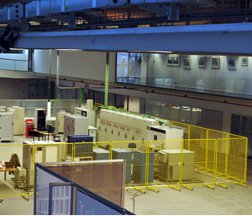TECNALIA Research & Innovation (TECNALIA)
TECNALIA Research & Innovation is the first private Research, Development and Innovation (R&D&I) organization in Spain and one of the leading ones in Europe, with a staff of a more than 1500 experts (including 180 Doctors), 22 headquarters and a turnover of 125 million Euros.
TECNALIA was established in 2010 as the result of the merging of 8 technological and applied research centres: LABEIN, INASMET, ROBOTIKER, FATRONIK, CIDEMCO, ESI, LEIA and EUVE.
The mission of TECNALIA is to transform knowledge into GDP, improving people's quality of life by generating business opportunities for companies. To accomplish this, TECNALIA is organised in 16 fully interconnected sectorial Business Units grouped into 5 Divisions:
- Sustainable Development Division: Construction Unit, Energy Unit, Environment Unit, and Meteo Unit.
- ICT-European Software Institute Division: Telecom Unit, Media Unit, Information and Interaction Systems Unit, Information Society Unit, and Software Systems Engineering Unit.
- Industry and Transport Division: Foundry and Steelmaking Unit, Industrial Systems Unit, and Transport Unit.
- Innovation and Society Division: Innovation Systems Unit.
- Health Division: Biomaterials-Tissue Engineering Unit, Biotechnology and Pharma Unit, and Health Technologies Unit.
TECNALIA's offer includes different activities: technological services, testing and certification, R&D&I projects, transfer of industrial property, business promotion, business diversification, innovation management and foreign support.
Energy Unit
With 140 specialists (including 20 doctors) distributed in 4 locations, the Energy Unit of TECNALIA works in the research areas of solar energy (thermal and photovoltaic), energy storage, wind and wave energy, bioenergy and smart grids, as well as in testing and certification of electrical equipment and systems.
Specifically, the smart grids area is focused on:
- Advanced power system architectures: microgrids for buildings and districts.
- Demand side management and demand response.
- New power converters for grid connection.
- Electric mobility: infrastructure, V2G.
DER Test Facility (DER-TF) of TECNALIA (pdf)
Research Activities of TECNALIA (pdf)
More information can be found at www.tecnalia.com.




